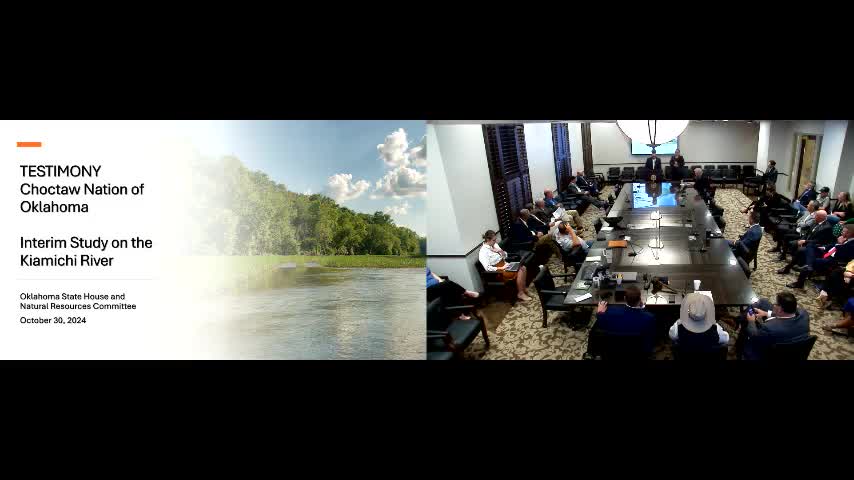Kiamichi River faces critical water rights battle
October 30, 2024 | Energy and Natural Resources, House of Representatives, Legislative, Oklahoma
This article was created by AI summarizing key points discussed. AI makes mistakes, so for full details and context, please refer to the video of the full meeting. Please report any errors so we can fix them. Report an error »

In a recent government meeting, officials discussed the critical importance of the Kiamichi River, highlighting its economic, environmental, and cultural significance to the region. The river serves as a primary water source for several municipalities, including Clayton, Antlers, and Hugo, and is vital for local agriculture and tourism. The meeting underscored the river's unique biodiversity, which includes endangered species and numerous archaeological sites, necessitating careful consideration before any large-scale projects can proceed.
The Kiamichi River is protected under a 2016 water settlement agreement involving the state of Oklahoma, the Chickasaw Nation, the Choctaw Nation, and Oklahoma City. This agreement designates the Kiamichi watershed as a Class B basin, safeguarding its cultural and ecological values from excessive water diversions. The settlement aims to ensure sustainable water management, balancing local needs with environmental protections, particularly during drought conditions when water flow can be unreliable.
Current data indicates that the river's flow has been at zero cubic feet per second for nearly two months, raising concerns about its reliability as a water supply. The meeting participants emphasized the need for an economic evaluation of the river basin to better understand its value and the dependencies of local communities on this vital resource.
Additionally, the Choctaw Nation's water resources director, Andrea Ablett, provided updates on the ongoing Federal Energy Regulatory Commission (FERC) licensing process for a proposed hydropower plant by SEOPC. The project faces significant opposition from over a thousand landowners, as well as formal objections from both the Choctaw and Chickasaw Nations and Oklahoma City. The meeting concluded with a commitment to ensure that FERC adheres to the water settlement agreement, protecting the Kiamichi River's resources for future generations.
The Kiamichi River is protected under a 2016 water settlement agreement involving the state of Oklahoma, the Chickasaw Nation, the Choctaw Nation, and Oklahoma City. This agreement designates the Kiamichi watershed as a Class B basin, safeguarding its cultural and ecological values from excessive water diversions. The settlement aims to ensure sustainable water management, balancing local needs with environmental protections, particularly during drought conditions when water flow can be unreliable.
Current data indicates that the river's flow has been at zero cubic feet per second for nearly two months, raising concerns about its reliability as a water supply. The meeting participants emphasized the need for an economic evaluation of the river basin to better understand its value and the dependencies of local communities on this vital resource.
Additionally, the Choctaw Nation's water resources director, Andrea Ablett, provided updates on the ongoing Federal Energy Regulatory Commission (FERC) licensing process for a proposed hydropower plant by SEOPC. The project faces significant opposition from over a thousand landowners, as well as formal objections from both the Choctaw and Chickasaw Nations and Oklahoma City. The meeting concluded with a commitment to ensure that FERC adheres to the water settlement agreement, protecting the Kiamichi River's resources for future generations.
View full meeting
This article is based on a recent meeting—watch the full video and explore the complete transcript for deeper insights into the discussion.
View full meeting
